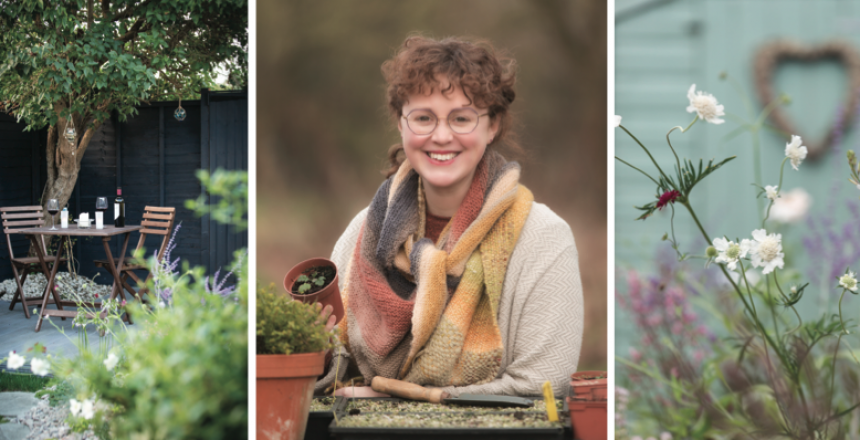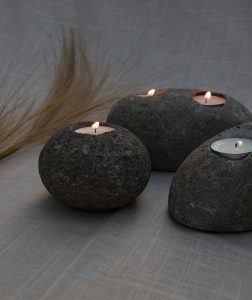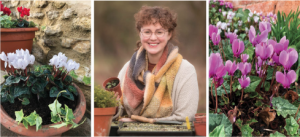Passion yields rewards read on for nature’s secrets . . .
Here we are September: ‘season of mists and mellow fruitfulness’: Keats, over quoted, but rarely surpassed in his evocative summing up of our years worth. Finally we are reaping the rewards of our labour but now as gardeners we start again with renewed vigour and verve, all those things that we did not achieve have promise for next year, bulb sourcing & planting, stealing the marches on seed sowing with biennial and perennials and of course cuttings both house and garden plants.
This is the time of year for more ambitious propagation: Semi-ripe cuttings, soft wood ripened by the sun of Passion flower, Clematis, roses, Ceanothus (Californian lilac), Cistus, Erica, Hebe, Lavender, Thyme, Sage, Mahonia & Viburnum. You see from the list these are woody shrubs & climbers you can even try your favourite trees! So time to experiment with whatever you fancy in this vein. The growth you need is this year’s; succulent, and rigid, not yet set hard with lignin as will be later, as we progress to winter.
So what’s it all about, many of us try early season softwood cuttings of salvia, dahlia, fuchsia or even tomato but think the later season’s offerings are a little long termist? The thought of growing our own Californian lilac for instance seems a slow return but really Buxus cuttings, Passionflower, Clematis, Lavender these plants can be expensive and are barely more than year old cuttings when we buy them. Just think of the knot garden you can design and install with hundreds of your own grown box hedge & lavender or the satisfaction of clothing that wall with 10 climbing roses for free!!
The key is to keep the moisture in the cutting and keep the growing medium light and mean on nutrients. The cutting is to be longer than those taken for softwood. Plunge at least 2/3rds into seed & cutting compost with perlite 50/50 but you can try it with just compost too. Any leaves are removed below the soil level and halved above. You need several nodes beneath the soil level to root. Do not put in direct sunlight to avoid drying out and use a cloche or plastic bag if you don’t have a greenhouse which just stops the wind whipping the moisture off and drying it out before they have roots to supply more water. Remove the bag daily for a refresh of the air, to reduce fungal die back. They won’t need plastic once they have ‘taken’. These cuttings will need to stay put for a while so choose a good spot for long term baking!
Thriving to survive:
I wanted to just give a quick insight into what happens in this magical severance process. As it is only the preserve of plants to lose a limb and grow afresh. In fact named cultivar shrubs in the nursery world are almost exclusively the same plants! Vegetative propagation; making another plant from a stock plant has become the preserve of the Dutch supplying our nurseries and supermarkets with the most wonderful hothouse grown, superb specimens. But although this is a mystical science that can be perfected to the ‘enth degree it is the prerogative of the plant to just do it. They have over millions of years of evolution dropped limbs and sprouted new in order to migrate to better conditions, colonise more areas or just because they can. Succulents are a fantastic example. A leaf of Echeveria elegans can fall, lie on the desert floor for weeks slowly sending out roots and then plantlets from the node point (place where they are attached to the plant) and then with the morning dew grow again and creep across planes. The triffids are coming!
As for the cutting there is latent potential in each bud for leaf, or flower, or root – a truly inspiring lesson in being what you need to be to survive. Should you cut to a ripening flower bud on say Wisteria you could, by a threat, force flowering and therefore seed production from a plant thinking it’s at war. Beauty & babies comes with living for the moment!!!!! But should you take the whole limb (approx 9 inch in the case of rose cuttings) and bruise the lower nodes which will be plunged into soil these nodes will grow roots, stored starches will liberate to keep that limb alive and maintain life. AMAZING!!!
So give it a go! Come on natures miracles await us and life nurtured does so much for the planet and us. Ask neighbours and friends to do a swap and share and let us know what you are trying on the Look Local Facebook page.
For a more expansive explanation into why you do the above or for gardening ideas and inspiration check out my Blog on my website www.mimosagardendesign.com or visit my Facebook Page.
With love, Lucie, Mimosa Design




